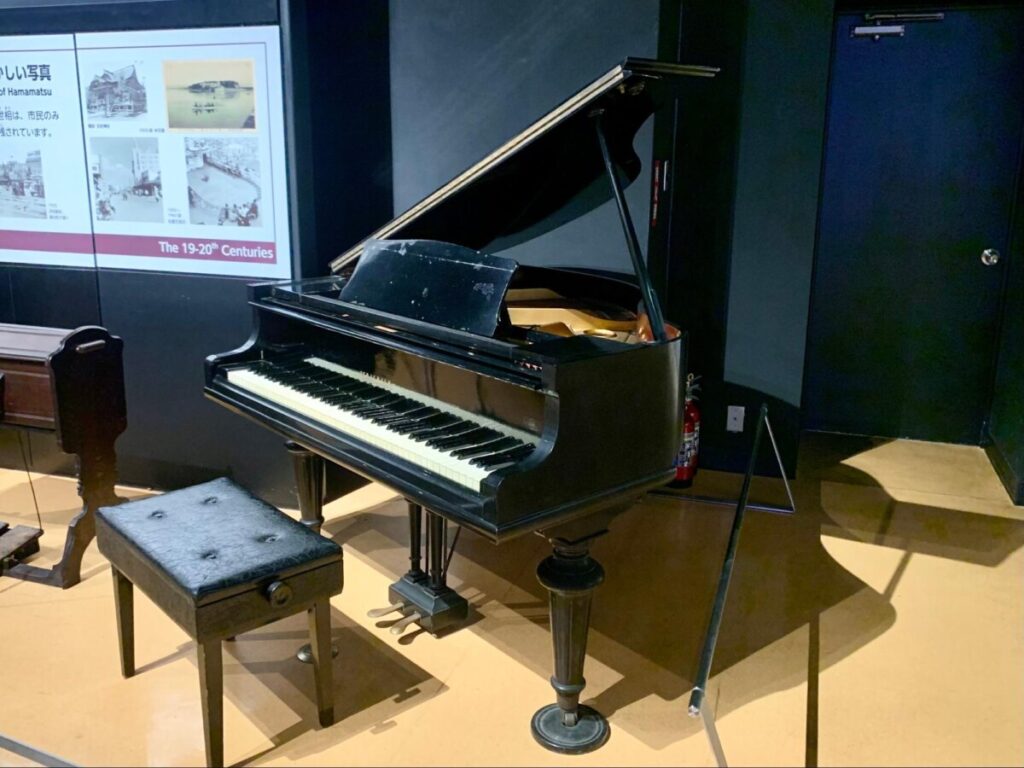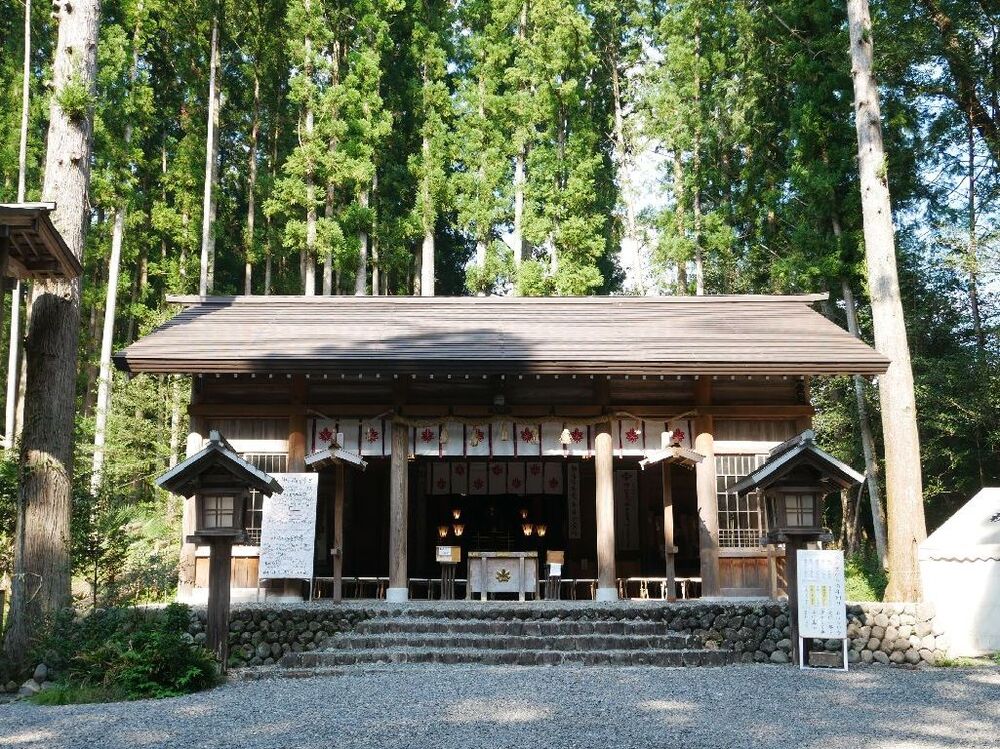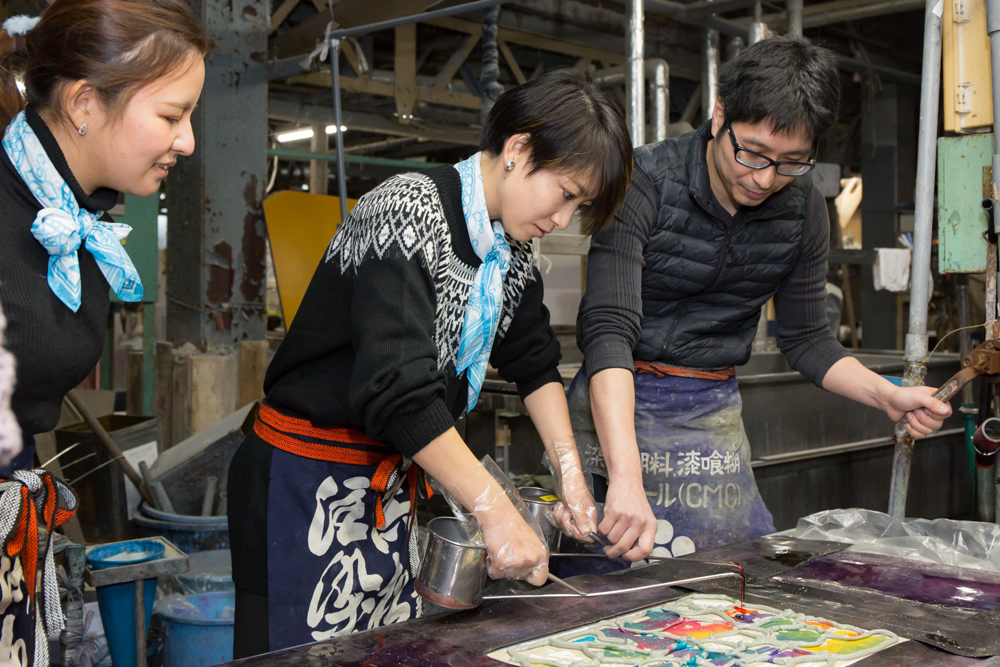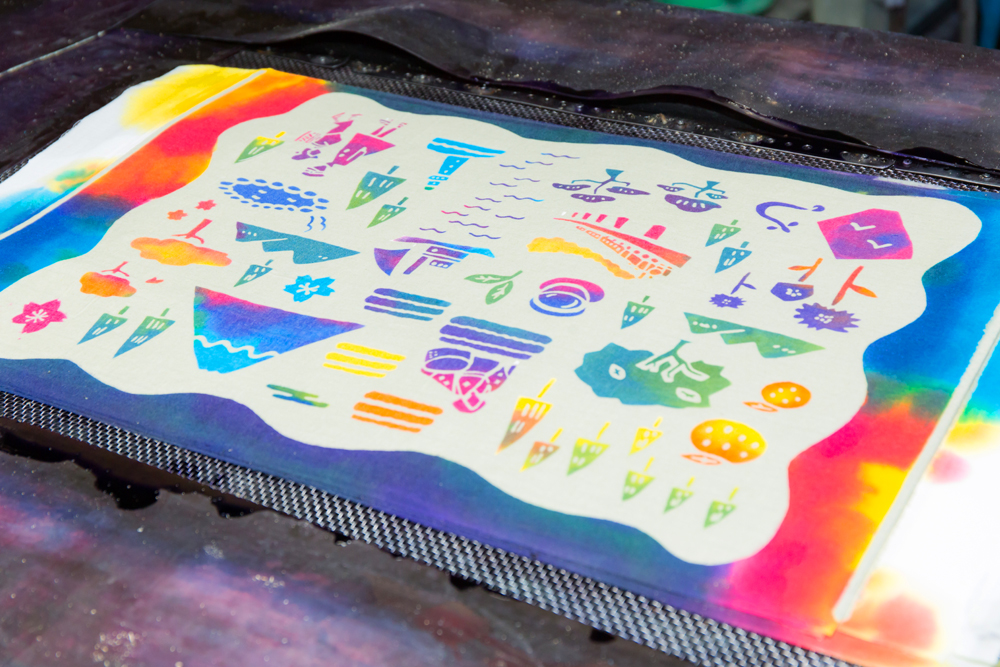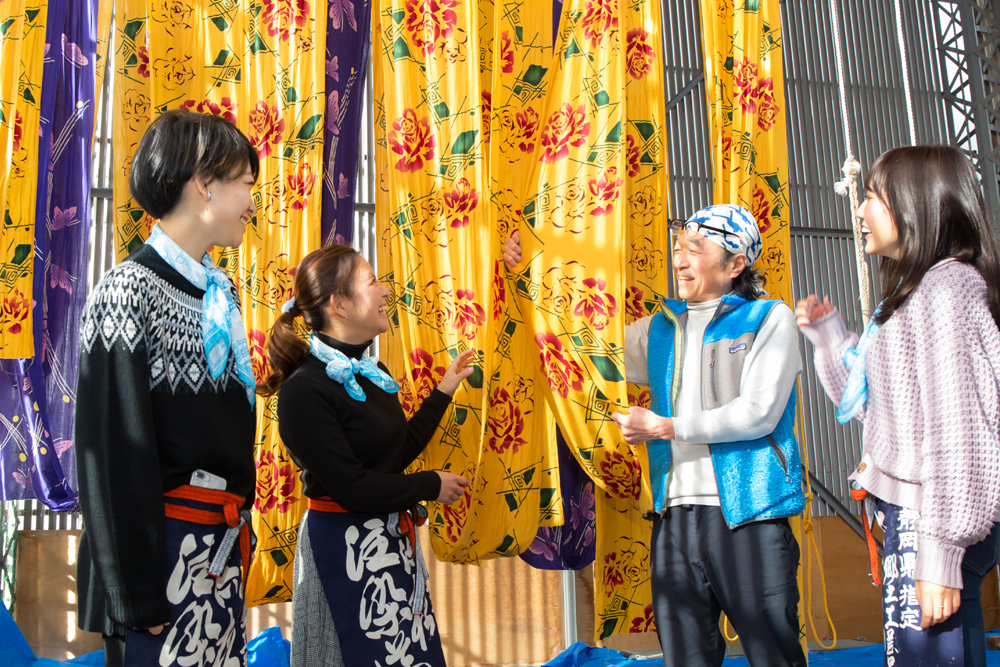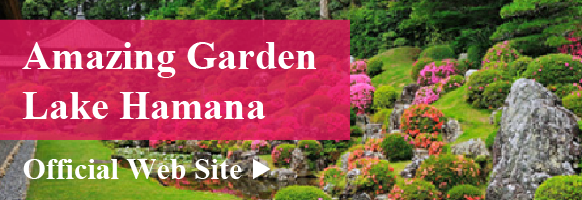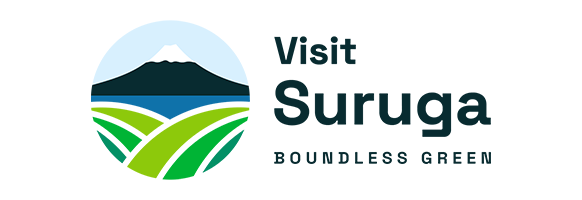Get to Know Hamamatsu
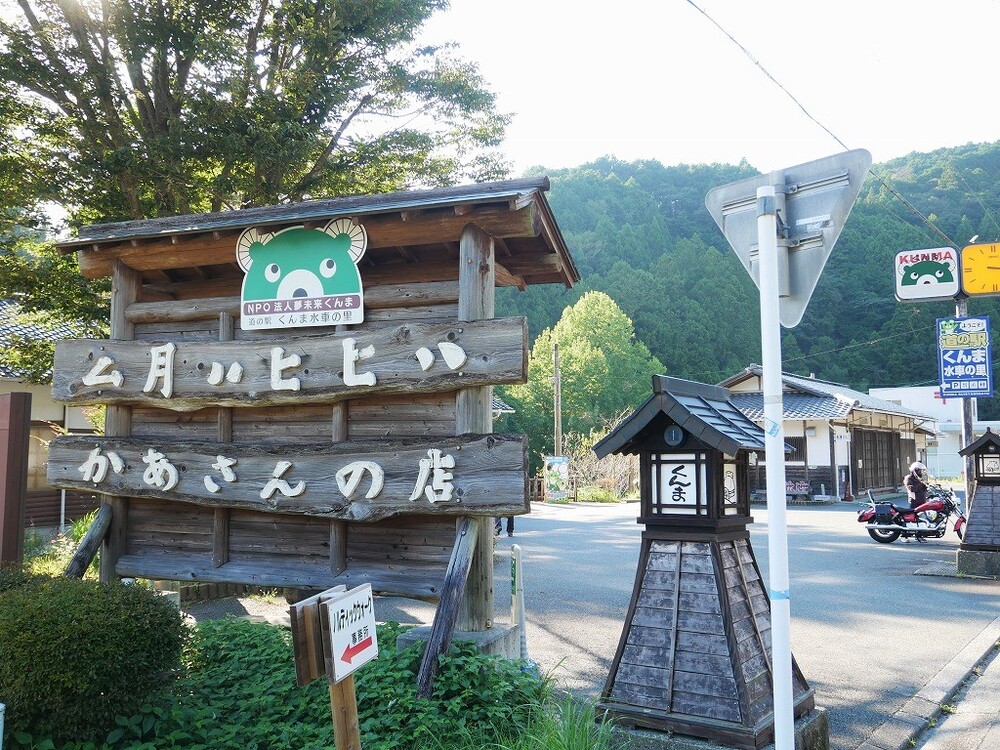
- Enjoy
A look into the charm of Kunma Suisha no Sato, a relaxing roadside station that can be enjoyed in all seasons.
Kunma Suisha(water wheel) no Sato, a roadside station in the northwest of Tenryu Ward, Hamamatsu City, is a popular spot where you can enjoy nature, gourmet food, and handmade experiences all year round.
The people in charge of customer service inside the store are mothers from the local Kuma district. Due to the warmth of its customer service and atmosphere, it won the “Tokoro JAPAN Local Roadside Station Grand Prix” in September 2022.
This time, we will introduce you to the highlights of Kunma Suisha(water wheel) no Sato and how to enjoy it.
Where is Kunma Waterwheel Village?

Approximately 40 kilometers northwest of central Hamamatsu City. The roadside station “Kunma Suisha(water wheel) no Sato” is located in a peaceful mountain area. It is the northernmost of the three roadside stations in Hamamatsu City.
The landmark is a large sign that says “Mutsuki Hahihiha/Mom’s Store.” This is a decomposition of the character for “kuma”. At some point, I started writing “Kuma” and reading it as “Kunma.”
Kunma Suiryu no Sato was certified as a roadside station in 1995 (Heisei 7), but activities had already started in the late 1980s.
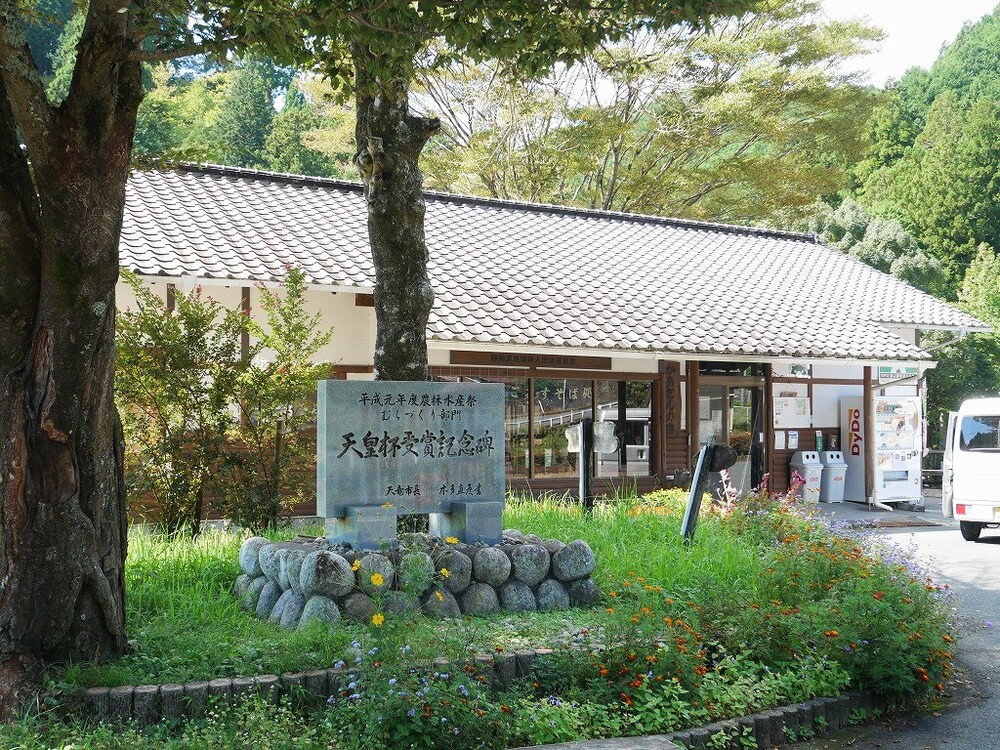
The photo above is “Mom’s Store,” which is the centerpiece of the village.
Here you can enjoy handmade soba noodles and venison curry. We will introduce the menu details later, so please look forward to it.
In addition, on the premises there is a souvenir shop “Buratto”, “Fureai-ie” where you can try making soba noodles, restrooms, a water mill, and miso/pickle and konnyaku processing facilities.
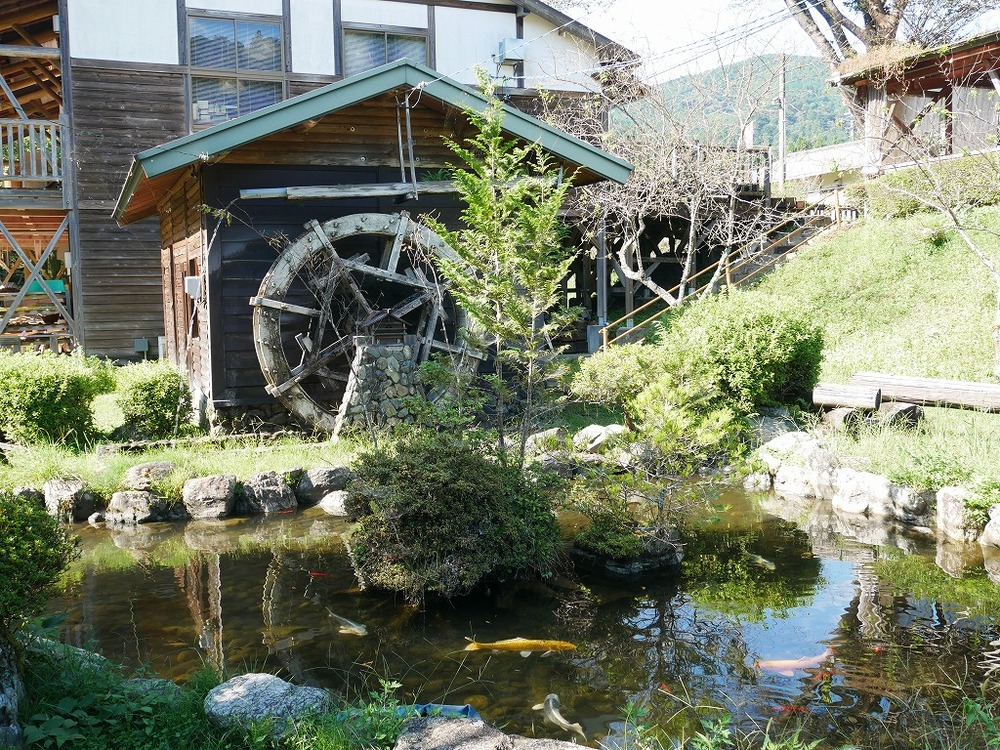
The watermill is located down the stairs from “Mom’s Shop”.
The water wheel is powered by water from a nearby stream. It is pulled to this point and rotated using water pressure and height differences (as of October 2022, it is not rotating due to a malfunction).
You can also see goldfish and large colored carp in the pond near the watermill.
Playing in the Atago River!
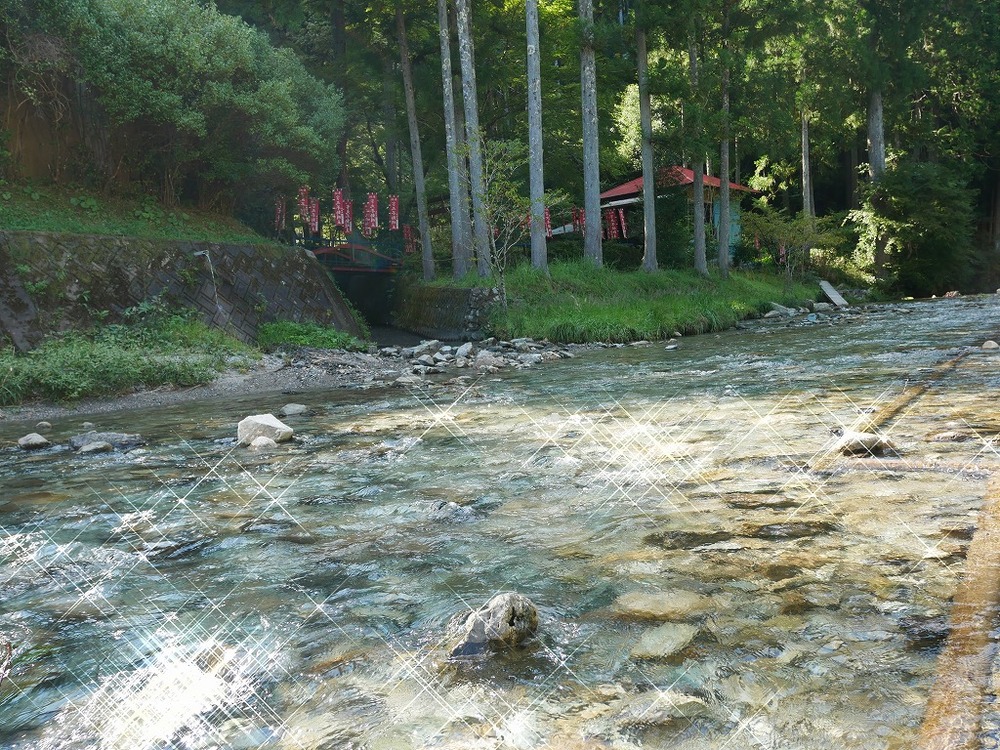
The most popular thing to do at Kunma Waterwheel Village is definitely playing in the river!
The Atago River, which flows behind the buildings in the village, is highly transparent and was selected as one of the “100 Famous Waters of the Heisei Era” in 2008. It is the only river in the western area of Shizuoka Prefecture that is listed as one of the “100 Best Waters of the Showa Era.”
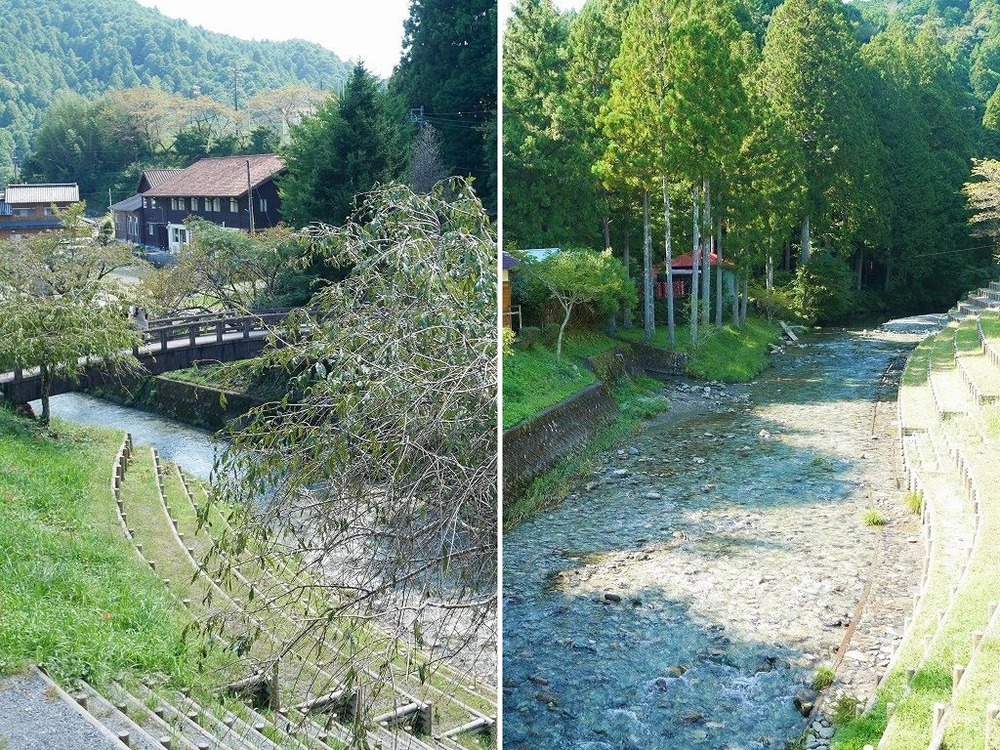
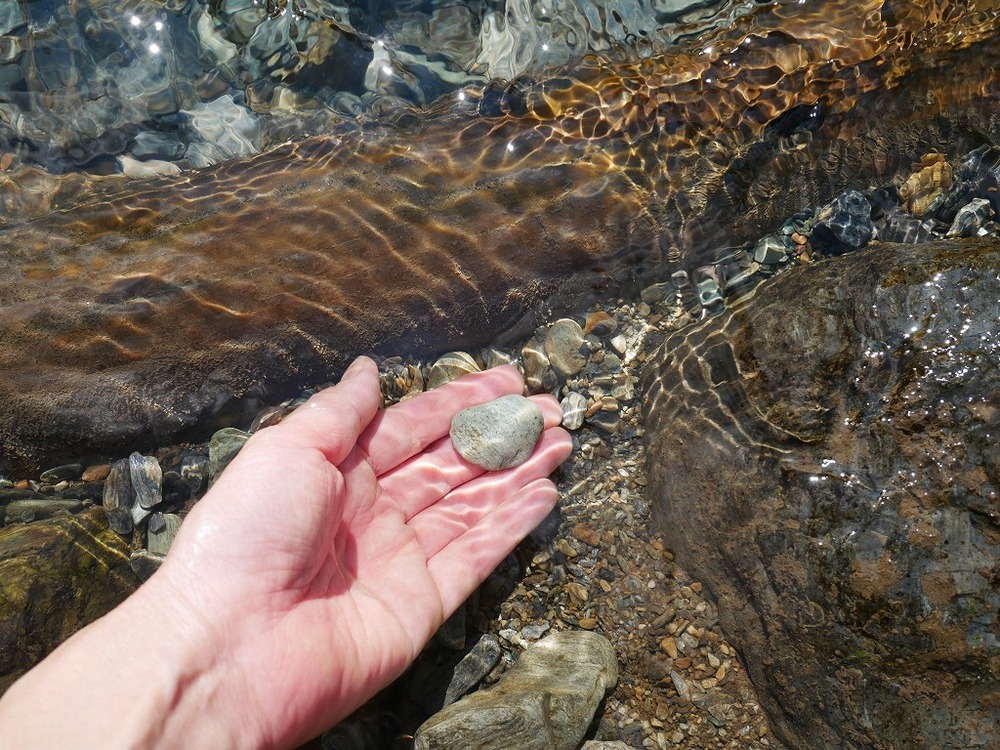
The Kuma district is the source of the Atago River. Therefore, the river width in this area is not very wide and the water depth is shallow. If you want to play in the river, go down the protected stairs to the shore.
Fortunately, you can bring your own lunch. In addition to playing in the water, you can also observe river fish and remove pebbles to look for freshwater crabs. Enjoy Kunma all over your body in the midst of rich nature!
oh yeah. Don’t forget to take your trash home with you when you return home. Also, the Atago River is not managed by Kunma Waterwheel Village, so please be sure to follow the rules.
Experience making delicious things by hand at “Fureai no Ie”
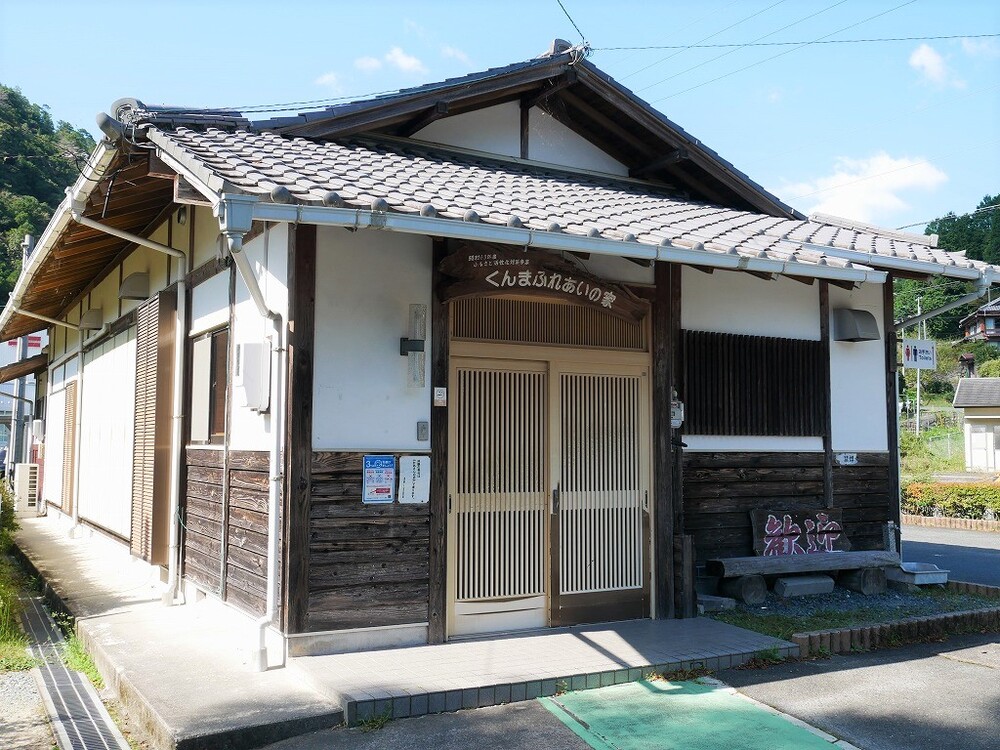
At Fureai-ie, located next to the parking lot, you can try your hand at making soba noodles, gohei mochi, and konjac.
●Soba making experience●
The taste of soba made with your own hands is exceptional. The parents will teach you carefully, so it’s okay even for beginners. If you are interested, feel free to let’s try!
●Gohei mochi making experience●
Gohei mochi is a local dish common in the mountainous areas of the Chubu region! However, the shape and taste of miso sauce vary from region to region.
The shape and taste that are common in the mountainous areas of Hamamatsu City, including Kuma, are flat oval shaped with miso sauce. This is also the shape we make at Fureai House.
Even if it loses its shape a little, it’s still a memory. Would you like to try making Gohei mochi by hand?
*In addition to the basic Gohei mochi making mentioned above, the Gohei mochi making experience that respects originality is also popular, allowing you to enjoy three different flavors, shaping it into your own favorite shape, and toppings.
●Konjac making experience●
From October to March of the following year, you can try your hand at making konnyaku using konnyaku potatoes.
How do you make konnyaku from konjac potatoes? First of all, what kind of potato is “konnyaku sweet potato”?
Whether you are interested or not, the taste of real konnyaku made from konjac potatoes is exquisite! Please try it!
Please note that all handmade experiences require a fee and advance reservation by phone. Please see the official website for details.
Roadside Station Kunma Suisha(water wheel) no Sato official website (external link)
Enjoy local gourmet food
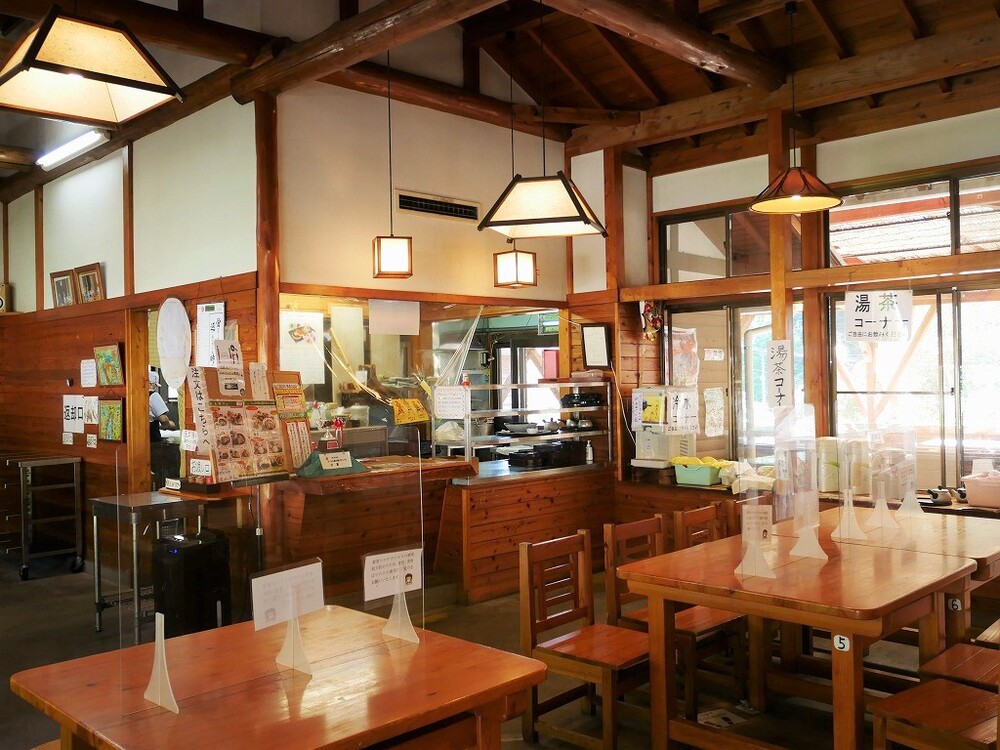
If you’re hungry, please come to “Mom’s Store”.
Inside the store, where you can feel the warmth of wood, you can enjoy homemade soba noodles and local curry.
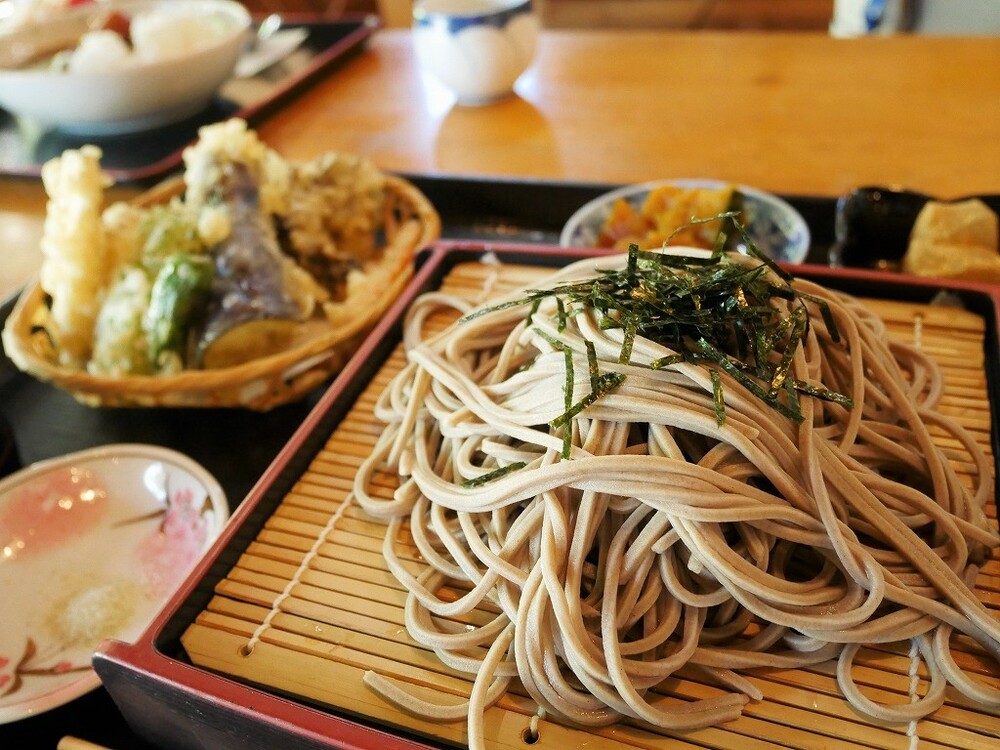
The photo above is Tenzaru, whose main dish is hand-made soba noodles made in Satonai. The set includes a platter of zaru soba and tempura, a small side dish, and sweets.
All of the tempura made with maitake mushrooms from Kuma are freshly fried. It’s easy to bite! I could almost hear the sound. There are also plenty of seasonal vegetables.
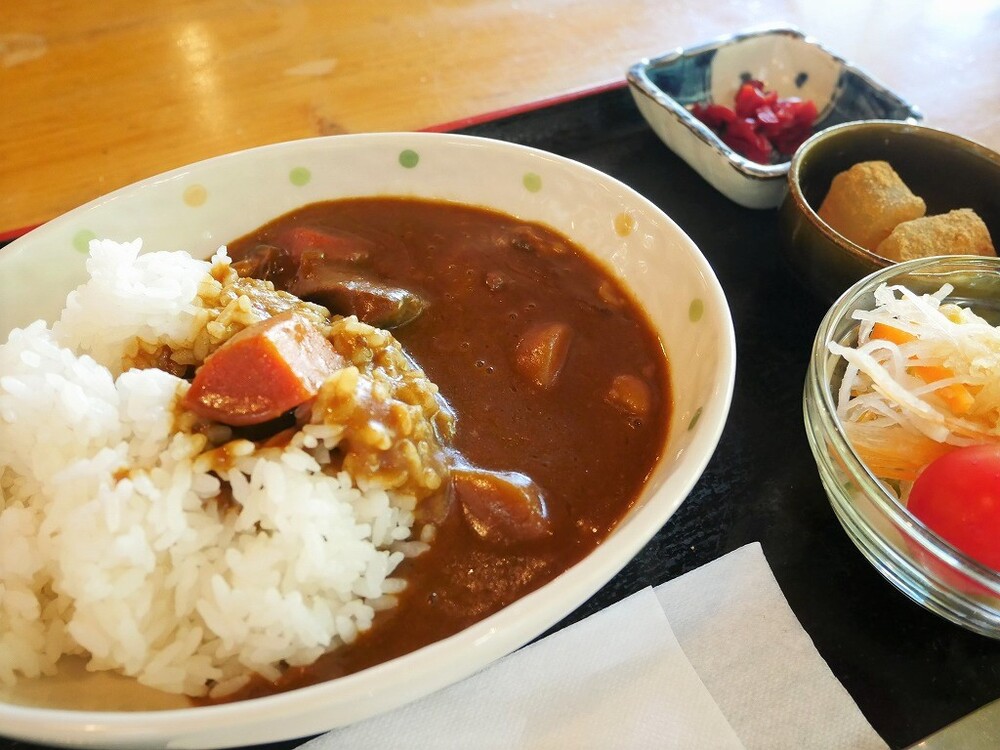
The local curry is made with venison! In Tenryu, deer and wild boars, which live in mountainous areas and eat up agricultural crops, are properly exterminated before being eaten as a game dish.
There’s no need to worry about “Isn’t venison smelly?” Because it was slowly simmered, I was able to eat it deliciously without any smell. The venison curry also comes with a small bowl and sweets.

We recommend seating on the terrace when the restaurant is crowded or when the weather is mild.
Recommended points unique to the four seasons
●Spring●
You can enjoy flowers such as Mitsumata and Edo Higanzakura. In the surrounding area, including the village, horsetail, Japanese katakuri, Japanese parsley, as well as ryukinka and loquat flowers bloom, announcing the arrival of spring to the village.
This is the time to harvest shiitake mushrooms. Log shiitake mushrooms are harvested twice a year.
●Early summer~summer●
In early summer, carp streamers and the white Orlea flowers blooming along the promenade will soothe the eyes of visitors.
Enjoy playing in the Atago River in the summer!
●Autumn●
About half a year since spring. In autumn, log shiitake mushrooms are harvested. Starting in October, you can try your hand at making konjac.
From mid-November onwards, the surrounding mountains, including the village, are colored with autumn leaves and ginkgo leaves. The azaleas planted as a hedge turn bright red, and it’s so vivid!
●Winter●
Bears are more likely to see snowy scenery, which is rarely seen in the plains of Hamamatsu. Please be careful of icy roads when you come.
Souvenirs & access methods
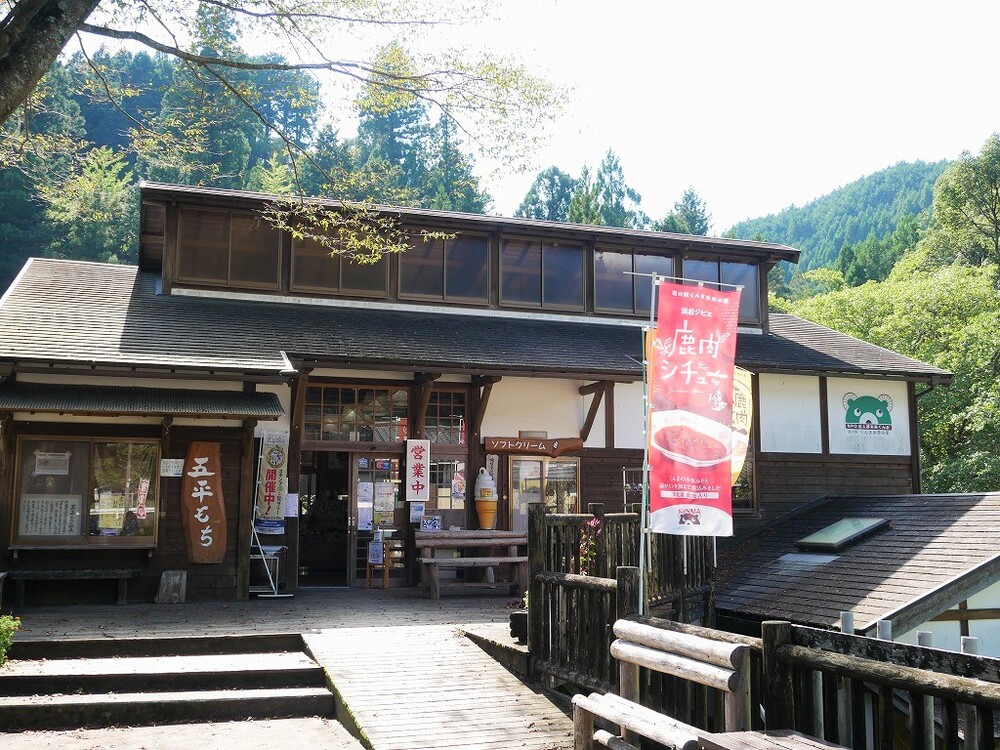
The product store “Buratto” is located between “Mom’s Store” and “Fureai House.”
In addition to processed foods made within the village, the store also sells handmade items made in the Kuma district and surrounding areas.
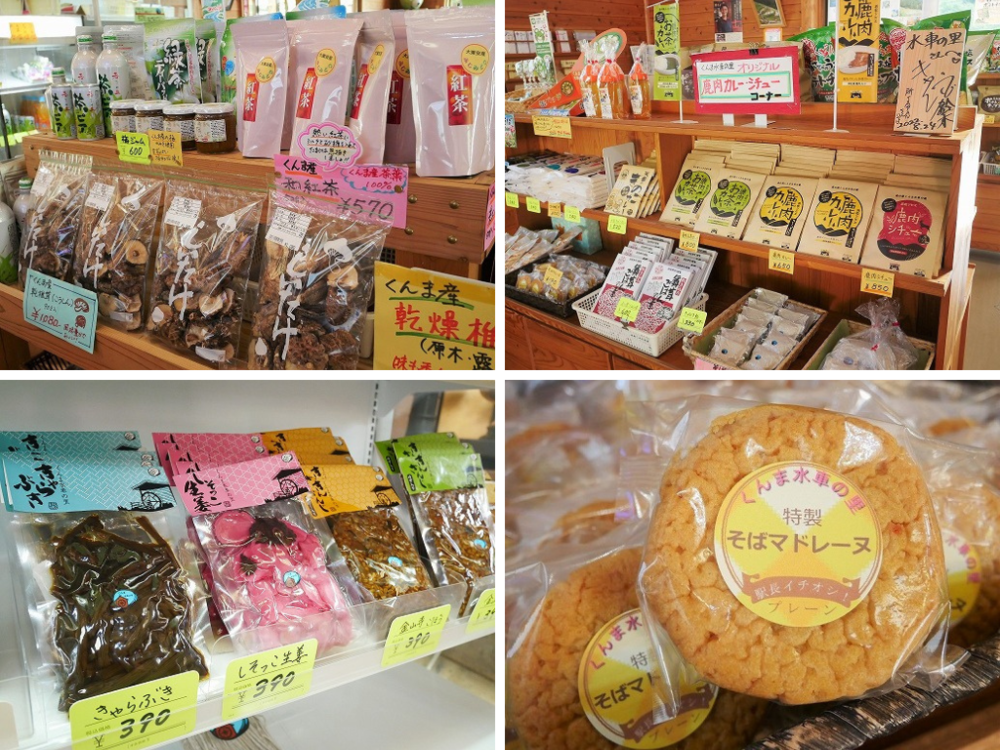
Near the entrance, there are Japanese black tea made from dried shiitake mushrooms from Kuma and tea leaves from Tenryu, and Maitake mushroom rice mix. Dried shiitake mushrooms are of course log shiitake mushrooms. I purchased this for home use. Log shiitake mushrooms from Tenryu are delicious.
The pickles displayed in the refrigerated showcase are processed at Kunma Suiryu no Sato. Enjoy the nostalgic taste of mom.
Buckwheat madeleines and ready-to-eat venison curry and stew items are also popular.
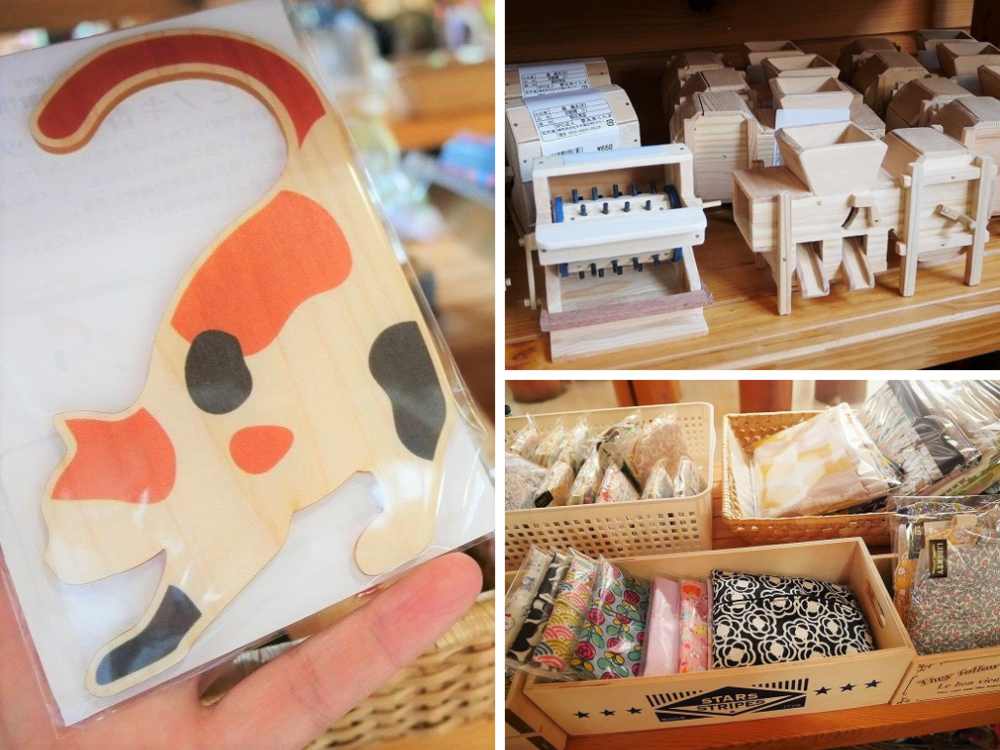
The handmade goods corner runs from the middle of the store to the back. In addition to practical coasters and hooks that can be expected to be effective as insect repellents, there are also reproductions of winnows and threshing machines once used in rice cultivation.
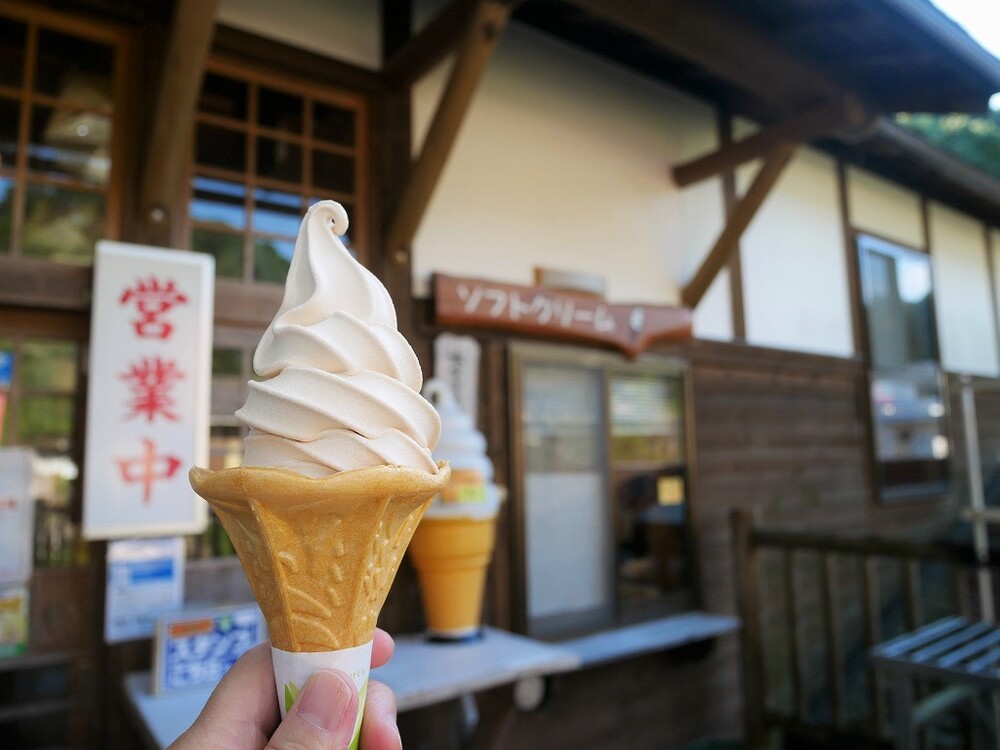
If you feel like eating something while driving, how about some Gohei mochi or soft serve ice cream? Each item is sold next to the entrance of Buratto.
However, Gohei Mochi is only available on Saturdays, Sundays, and holidays, so it will not be sold out on any given day. It’s a hit. The soft serve ice cream is sold from March to early December. You can enjoy different flavors depending on the season.
We also sell shaved ice for about a month starting in early August.
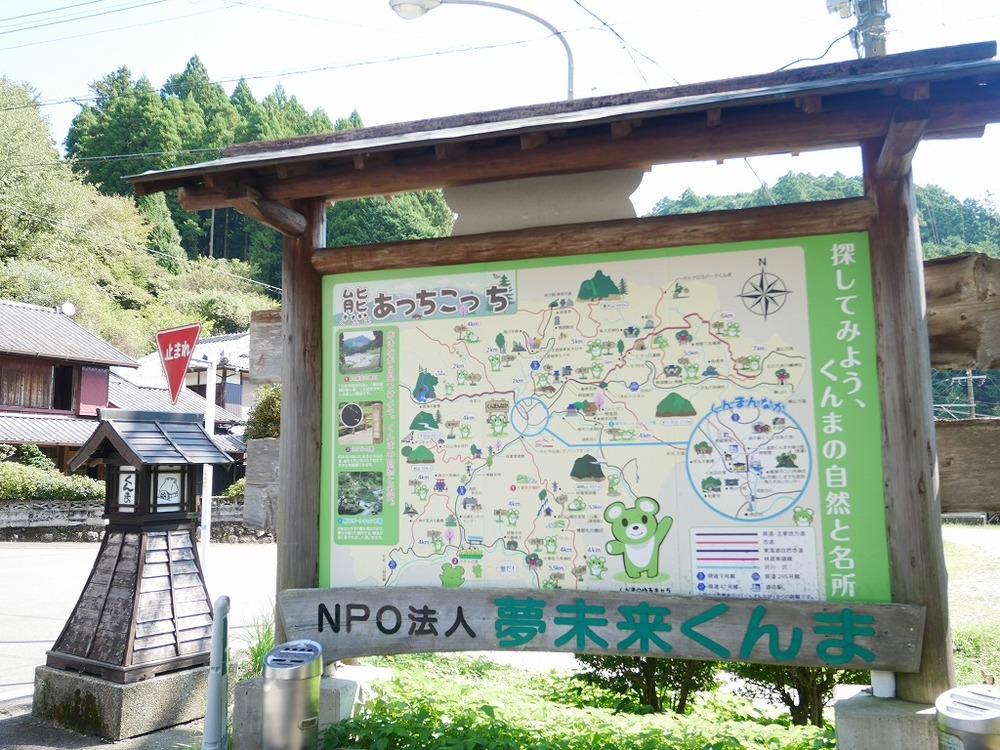
●Access method/by car●
As for how to get there, if you are driving, we recommend getting off at the Hamamatsu Hamakita IC on the Shin-Tomei Expressway before heading there.
After getting off at the IC, turn left at the “Nakase Ohira” intersection, then turn right at the first intersection to merge onto Shizuoka Prefectural Route 45 (commonly known as Kasai Kaido).
Continue along the road, pass under the Tenryu Hamanako Railway viaduct, and immediately turn right at the Kashima Sakashita intersection to get onto National Route 362. Then, turn left at the “Kashimabashi” intersection, which is located just before Kashimabashi Bridge, which spans the Tenryu River.
Once you’ve come this far, all you have to do is head north on Shizuoka Prefectural Route 9 (Tenryu Toei Line).
(You can also get off at the Hamamatsu Inasakita IC on the Shin-Tomei Expressway and go through Shibukawa, but this is not recommended as it involves a series of curves.)
●Access method/When using public transportation●
If you wish to use public transportation, please use the “Tenryu Fureai Bus”, which is a demand-type (pre-booked) bus, as route buses are not running. Please include the round trip when making a reservation.
Hamamatsu City City Hall/Tenryu Fureai Bus (Kuma/Oshiroki Line) (external link)
「https://www.city.hamamatsu.shizuoka.jp/tn-machi/traffic/unkou/tenryu_kuma.html」
It is written as “Kuma” and read as “Kunma”.
Have a fun day at the warm and relaxing village of Kunma Waterwheel!
Roadside Station Kunma Suisha(water wheel) no Sato official website (external link)
